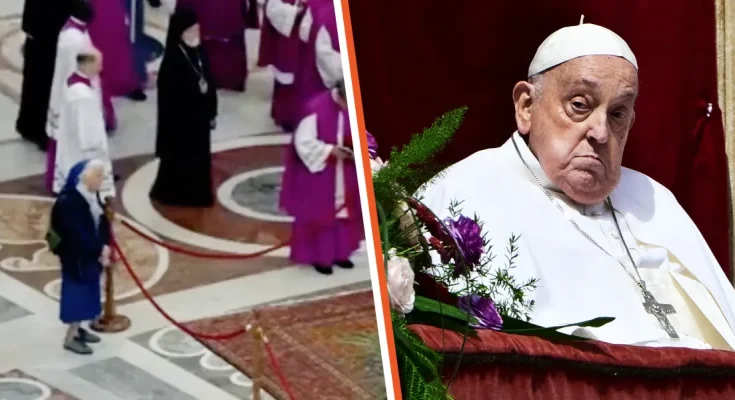A nun broke the rules so she could see Pope Francis’s body during his funeral. The two had met years earlier, before he was known as the Bishop of Rome.
Two days before his burial, Pope Francis’s body was moved from his home at the Casa Santa Marta to St. Peter’s Basilica. As the coffin made its way into the basilica, over 20,000 attendees responded with a quiet yet steady round of applause, per reports.
As the solemn applause faded beneath the towering dome of St. Peter’s Basilica, a more intimate scene quietly unfolded. On April 23, 2025 — the first day Pope Francis lay in state — cardinals formed a line inside the basilica to pay tribute. The doors had not yet opened to the public, but one figure moved against protocol.
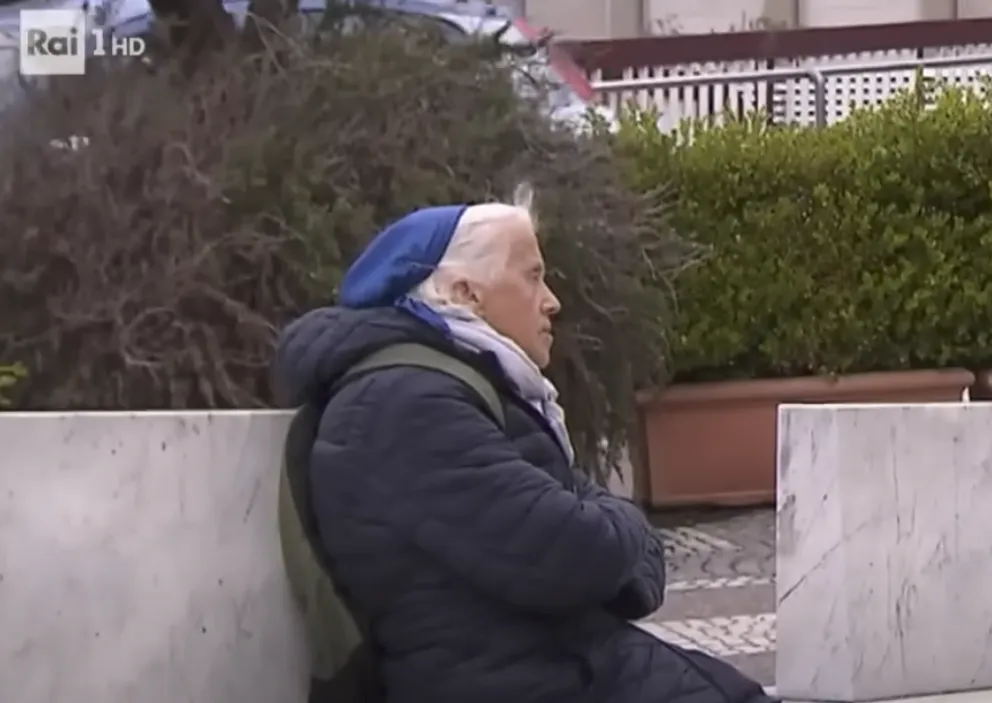
Sister Genevieve Jeanningros, aged 81, slipped past the expected boundaries and stood close to the pope’s coffin, where only clergy were typically allowed. Clips shared widely on social media captured Sister Genevieve, dressed in her navy habit and blue headscarf, as she was gently guided toward the red rope surrounding the late pope’s casket.
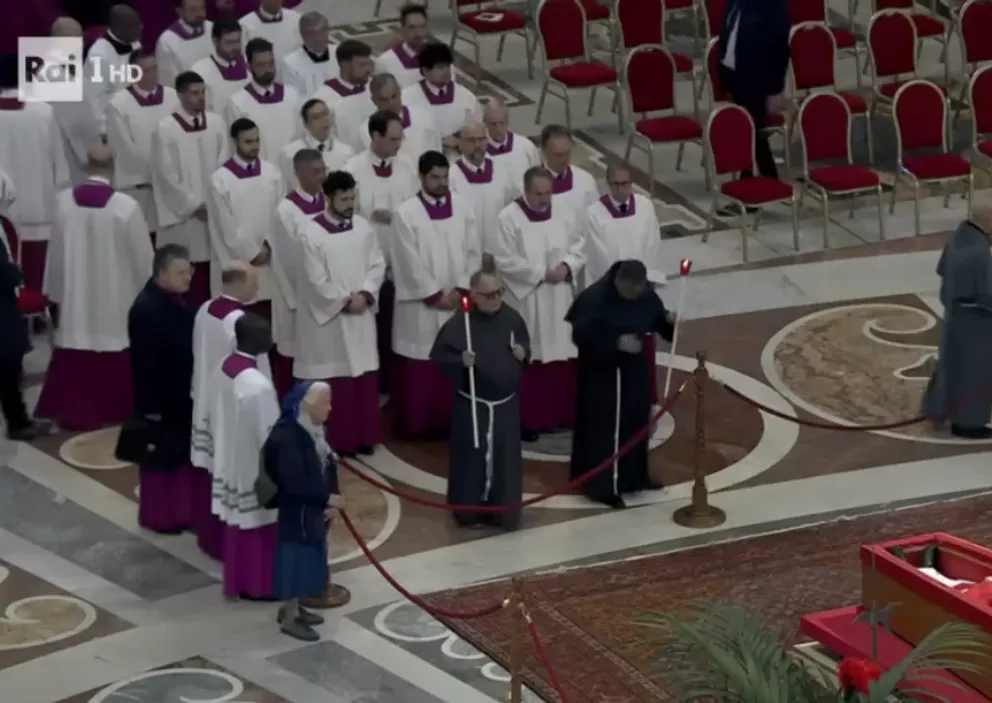
The moment she caught sight of his body, emotion overtook her — she covered her face and began to cry. With a modest green backpack resting on her shoulders, the French-Argentine nun remained still, deep in thought as she stood near the man she had known for decades.
Sister Genevieve says it all for 2025. 😢💕 pic.twitter.com/VkBflw0dTB
— jethro. 🗯️ (@jethrostudio) April 27, 2025
According to reports, no one intervened when Sister Genevieve, whom Pope Francis had once fondly nicknamed “L’enfant terrible,” began to cry. She was quietly granted the space to mourn, her grief unfolding freely in the stillness surrounding the late pope’s coffin.
Her unexpected appearance at the funeral, despite formal protocol, has since sparked a wave of reactions online. Many were moved by her presence and the emotion she displayed.
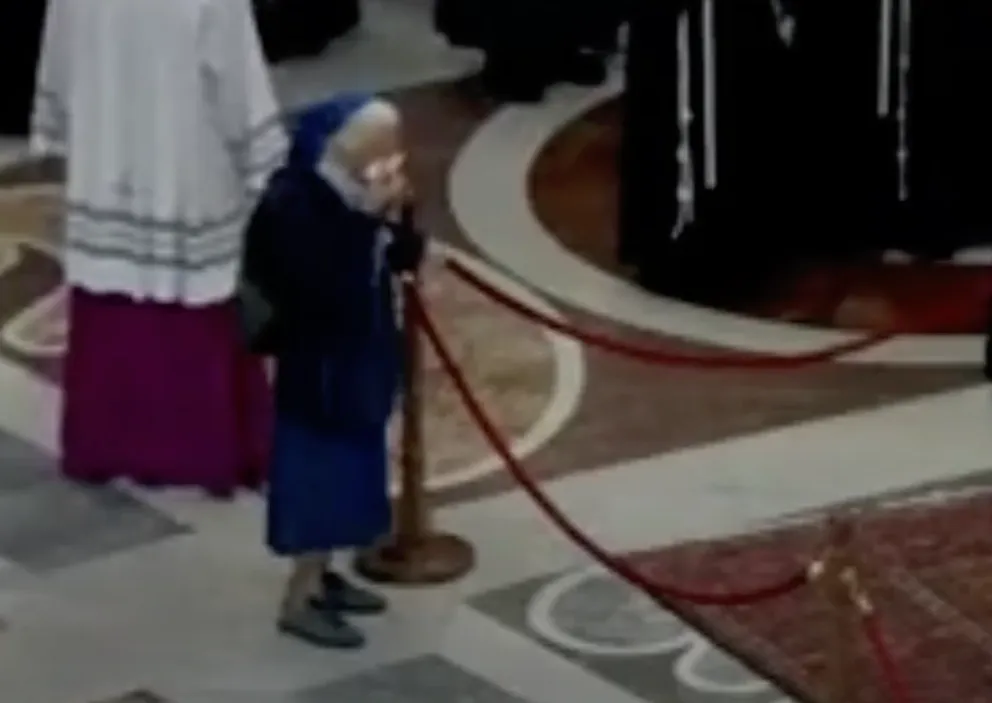
“Nobody can say anything to old girl,” one person wrote on social media, while another shared, “In a state of mourn, there is no such protocol.”
Some expressed sympathy, with one noting, “Sorry for her, two old people…” and another calling it “a beautiful gesture.” One other individual commented, “Heartbreaking to see her all alone…” while someone else added, “Maybe they should change the protocol’s then? She deserved to be there.”
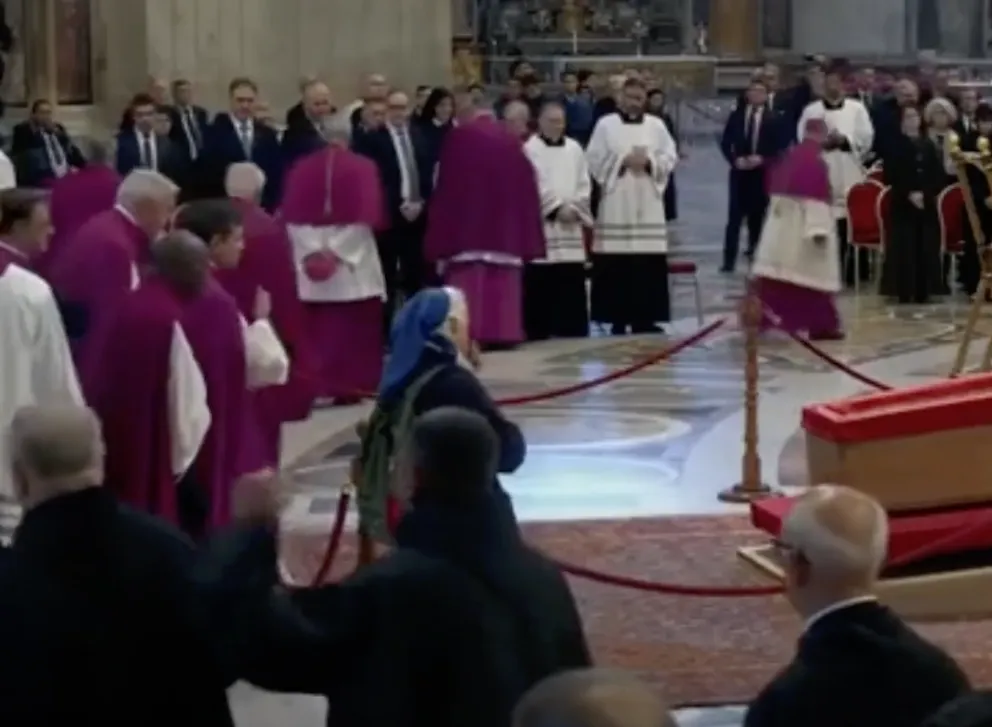
Sister Genevieve’s silent tribute by the coffin hinted at a bond forged through years of shared dedication and mutual respect.
Just nine months prior, Pope Francis had traveled to Ostia, a Roman suburb, to acknowledge her efforts in supporting those often pushed to the edges of society. As a member of the Little Sisters of Jesus, she had long worked among the area’s most disadvantaged residents.
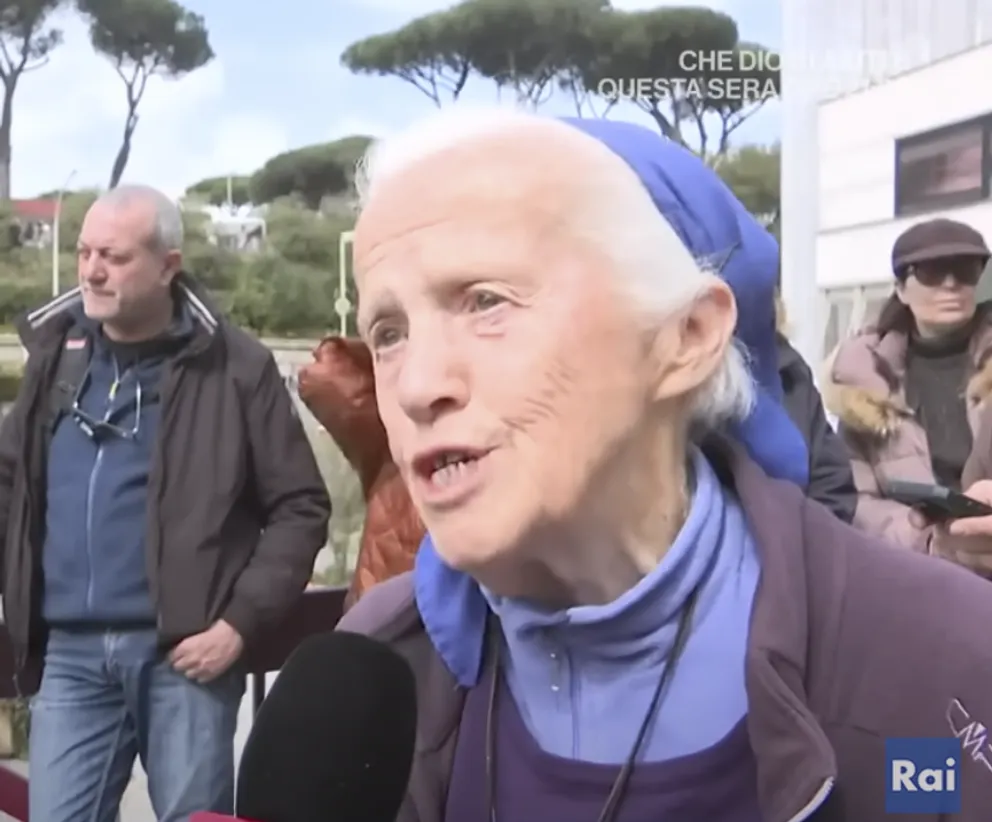
Their connection began two decades earlier, after she visited Buenos Aires for the burial of her aunt, Léonie Duquet. Although her first impression of the then-bishop was less than favorable, time and shared purpose brought them together in a lasting friendship focused on helping the poor and overlooked.
The duo’s friendship was not only built on service but also shaped by personal loss and a shared history rooted in tragedy. Sister Genevieve’s aunt, Léonie Duquet — a fellow French nun — was one of the many victims of Argentina’s brutal dictatorship.
On the night of December 14, 1977, she was thrown into the sea during one of the regime’s notorious “death flights,” along with another nun, Alice Domon, and ten human rights activists.
Human rights groups in Argentina estimate that as many as 30,000 people were forcibly disappeared between 1976 and 1983, many subjected to torture before being cast into the ocean.
The trauma of her aunt’s death left a lasting mark on Sister Genevieve, one that would later intertwine with her connection to Pope Francis. Although Léonie Duquet was buried in a mass grave after her body washed ashore, it was eventually recovered and identified in 2005.
At the time, Pope Francis — then serving as bishop of Buenos Aires — authorized her reburial at Santa Cruz Church, the same place where she had once been held. Detailing her bond with him, Sister Genevieve once shared:
“I cried almost from the start to the end of the mass… I couldn’t accept that a part of the church was on the dictatorship’s side.”
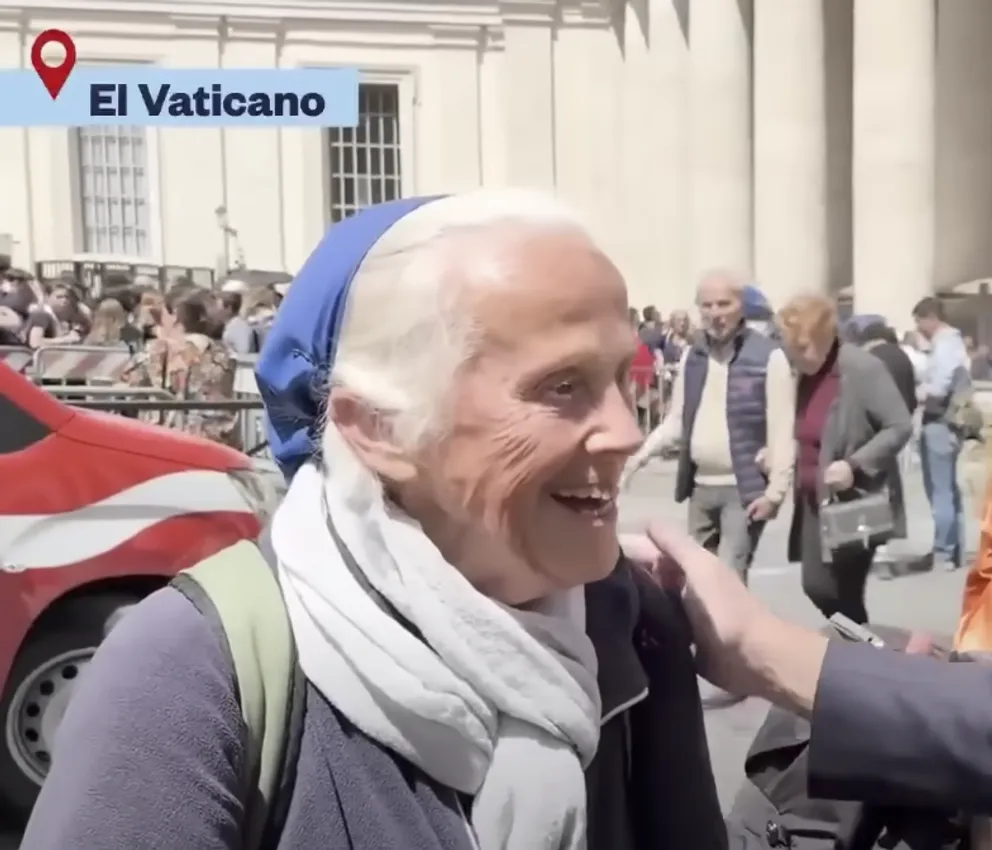
Years later, during a state visit to Argentina by French President Emmanuel Macron, she added her name to a letter urging him to remember the French nationals lost during the regime.
Sister Genevieve’s efforts to honor her aunt’s memory resonated with others who had also lost loved ones during Argentina’s dark chapter. Eric Domergue, whose brother Yves vanished in 1976 and was only identified decades later in 2010, crossed paths with her during her quest to secure a Catholic burial for Duquet.
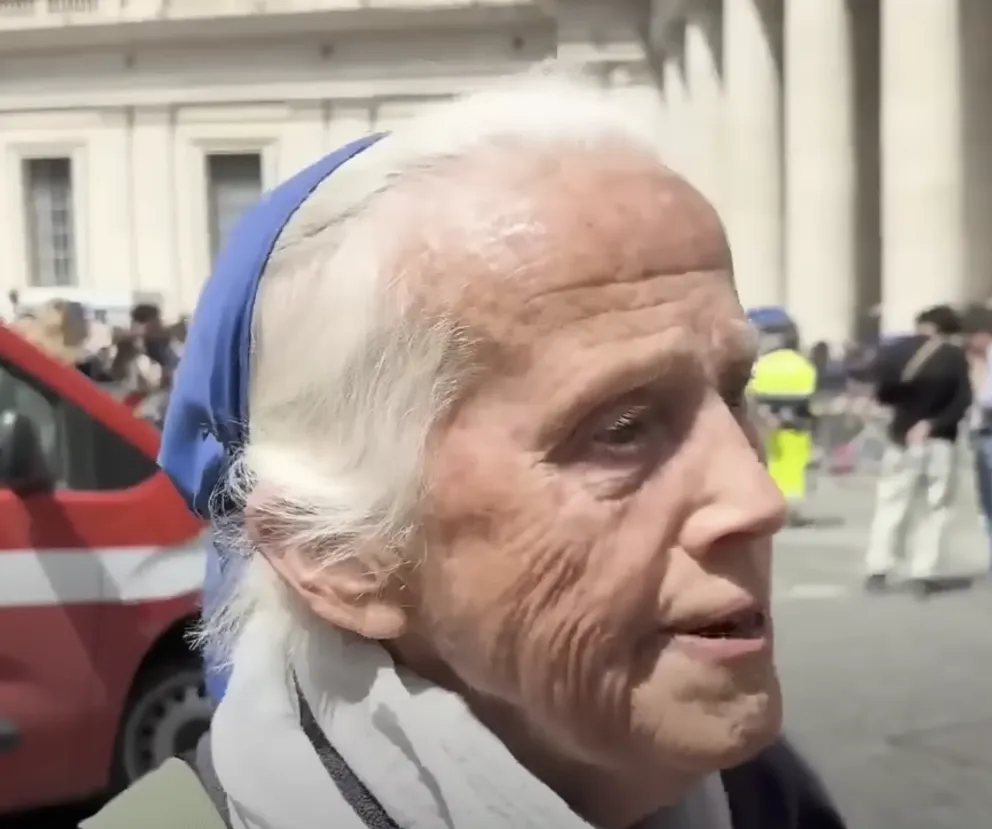
He recalled her “piercing stare and permanent smile” in an interview and noted her consistent compassion. Domergue further added:
“Genevieve is always attentive, asking about the family members of disappeared French people, and Argentines too.”
Their connection, once uncertain, grew slowly through kind actions and shared moments. In 2005, Sister Genevieve felt upset that no high-ranking church leaders came to her aunt’s funeral.
She sent a letter to Jorge Bergoglio — who would later become Pope Francis — while he was at a bishops’ meeting in Rome. He called her soon after, but she still had doubts about his reason for missing the service.
Eight years later, Sister Genevieve was in St. Peter’s Square when he stepped onto the balcony as the new pope. “I put my hands to my head and thought, my God, what will happen? I was afraid, that’s the truth,” she once admitted.
Her worries faded after hearing his message about helping the poor. Their friendship grew when he invited her to attend a mass at his Vatican home. He even made a visit to her small trailer near the Tyrrhenian coast.
Their connection deepened further during the Covid pandemic, as their shared concern for the vulnerable brought them even closer. At the time, Sister Genevieve asked Pope Francis to offer support to Luna Park fairground workers who had lost their income, and to meet with a group of Latin American trans women facing hardship.
Once public gatherings were allowed again, she regularly brought members of the LGBTQ community to his weekly audiences. Sister Genevieve revealed:
“I always wrote to him a little message to tell him who was coming.”
The visits, the letters, and the shared mission all came to a quiet end on April 21, 2025. Pope Francis passed away at age 88 in his Vatican home at Casa Santa Marta. According to the death report released by the Vatican, the causes were a cerebral stroke, a coma, and what was described as “irreversible cardiocirculatory collapse.”
After the news broke, crowds gathered in St. Peter’s Square. Some prayed with rosaries, others stood in silence, and a few wept. One person wrapped in Argentina’s flag honored the pope’s roots. One mourner, Brigitte Thalhammer expressed sorrow, saying she felt sad and that he had been very important.
Pope Francis died on Easter Monday, April 21, 2025, at the age of 88 at his residence in the Vatican's Casa Santa Marta. pic.twitter.com/jUIkbplVi2
— Vatican News (@VaticanNews) April 21, 2025
The mourning in St. Peter’s Square soon turned into quiet processions, as people continued to say their goodbyes in a more personal way.
After the public funeral held at the Vatican on April 26, 2025, Pope Francis was laid to rest the following day, April 27, in a private ceremony at the Basilica of Santa Maria Maggiore — one of Rome’s four major basilicas and a place he often visited both as a cardinal and as pope.
Scenes from Pope Francis' funeral today The Vatican pic.twitter.com/M3Ps9Px77x
— Complex (@Complex) April 26, 2025
Since the church opened to the public on that same day, thousands have filed past his tomb to pay their respects. Among them was Rosario Correale from Italy, who described the visit as “very emotional,” saying the pope “really left a mark on us.”
Meanwhile, Maria Brzezinska, a pilgrim from Poland, felt the setting was fitting, “I feel like it’s exactly in the way of the Pope. He was simple, and so is his place now.”
This is Pope Francis' simple tomb inside the Basilica of St. Mary Major in Rome pic.twitter.com/V36Ejyy9P9
— Larry Madowo (@LarryMadowo) April 27, 2025
The farewell to Pope Francis reached well beyond the basilica’s walls. His funeral drew heads of state, government leaders, and monarchs from across the globe, along with hundreds of thousands of Catholics who filled the streets leading to the Vatican to honor his memory.
His chosen resting place carried deep personal meaning. According to the basilica’s senior priest, pilgrim Amaya Morris, Pope Francis had expressed in 2022 his wish to be buried there, moved by his devotion to the Virgin Mary. Morris said:
“I thought it was amazing that he wanted to be buried here in this basilica. Out of all of the [churches], he chose this one. So I thought that was really amazing.”
Pope Francis asked to be buried in a simple tomb in Rome and had arranged for an unnamed benefactor to cover the expenses, the Vatican says.
“The tomb must be in the earth; simple, without particular decoration and with the only inscription:
'Franciscus'” pic.twitter.com/Km1TxbYBui— Larry Madowo (@LarryMadowo) April 21, 2025
Images released from the basilica show a single white rose placed gently on the stone tomb, where his papal name is engraved beneath a crucifix lit by a solitary spotlight — a quiet symbol of his life and legacy.
Sister Genevieve’s quiet act of mourning stood as a powerful symbol of a decades-long friendship rooted in faith, loss, and service. Her presence — unplanned yet deeply moving — captured the spirit of a man who championed the forgotten and opened the doors of the Church to all.
Pope Francis' tomb in a niche in the Basilica of St. Mary Major can now be visited by the faithful, as the Church commemorates the late Pope with the second day of the Novemdiales, or 'nine days' of mourning. pic.twitter.com/AyhukxUtmV
— Vatican News (@VaticanNews) April 27, 2025
As mourners from around the world gathered to honor Pope Francis, her tears echoed what many felt: a final farewell to a leader who chose humility over grandeur, and compassion over protocol.
